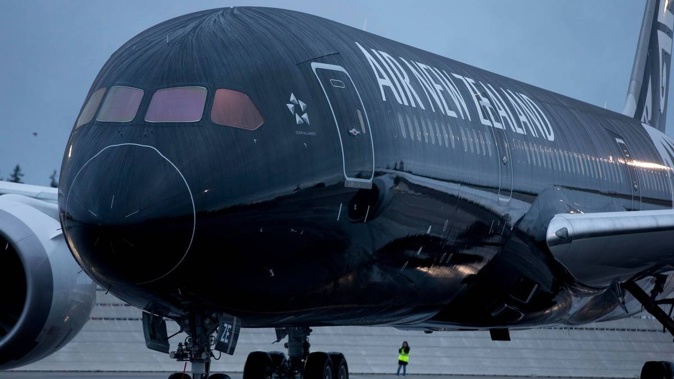
Air New Zealand this morning announced it is ordering new Boeing Dreamliners to replace its 777-200s which are being phased out from 2022.
The airline this morning said it will buy eight 787-10 planes and will switch out from Rolls-Royce engines to General Electric to power them. They will cost $2.7 billion at list prices but will get a significant discount.
The planes are bigger than those Dreamliners that have been in the airline's fleet since 2014.
Chief executive Christopher Luxon said it was an ''incredibly exciting day'' for the airline.
He said it marked a new chapter and had rights to take up to 20 Dreamliners, some of which could be 787-9 planes.
Following a two-year process, the airline had narrowed down its options to a new iteration of the Dreamliner and the Airbus A350, of which more than 500 are in service.
The airline has said both were excellent planes well suited to the airline's aspiration of flying as far as Auckland-New York in the future, a distance of 14,200km.
The larger Boeing 777X, which is still in development, had been considered but was not in the running this time, more likely an option further down the track for the airline's younger and larger 777-300s.
Boeing had presented new options for the 787 which, aside from the Rolls-Royce engine issues, has been a highly successful plane for the airline for the past five years. It has 13 in its fleet and another one to come as part of the original deal, first signed in 2004.
The airline has taken the opportunity to switch engine makers after more than 18 months of disruption caused by Rolls-Royce Trent 1000 Package C engine problems. It has gone with General Electric (GE) for the new Dreamliners.
/arc-anglerfish-syd-prod-nzme.s3.amazonaws.com/public/YEI6Z7F4TFESDBDIBTDM7TVGDU.jpg)
Selling more Dreamliners will be a fillip for Boeing, under intense scrutiny after new equipment on its smaller, new 737 Max planes has been linked to two fatal crashes. Following the crashes it has been widely condemned for its handling of the introduction of new systems, although they are different to those on Dreamliners.
.
This year a CAPA Centre for Aviation report earlier this year said ordering additional 787s would make the most sense as the 777-8X is too big and the A350 would result in Air New Zealand operating a third wide-body type — something which should be avoided given the airline's relatively small size - and Boeing was working on increasing the 787-9s maximum takeoff weight (MOTW) by around 10 per cent or 2.5 tonnes.
The higher MOTW variant should be available by 2022 and improve the feasibility of New York-Auckland and Sao Paulo-Auckland routes, the centre said.
There have, however, been recent reports of shoddy work on the planes at a Boeing plant in South Carolina. Air New Zealand has said it has no concerns about the aircraft made for it at the plant and that it had overseen manufacturing.
Dreamliners first flew for an airline in 2011 and entered the Air New Zealand fleet three years later. The development and early build programme was plagued by delays and problems and soon after it started flying commercially it had problems with battery fires. But since a fix was found for the batteries the plane has provided reliable service for airlines. More than 830 of a total 1400 on order are in service.
Qantas started flying Dreamliner 787-9s from Perth to London last year - at around 14,500km the longest route so far for the aircraft type. In the first year of operation, it reported 99.5 per cent reliability with only four flights cancelled, all because of technical issues.
New-version Dreamliners would not be noticeably different from the outside but Air NZ cabins will be completely remodelled by the time the planes are delivered in three years' time.
Extensive work is being done transforming the business class area in a test area known as ''Hangar 22'' where frequent flyers are testing new options to radically overhaul the cabin.
The airline's business premier product hasn't been overhauled for more than a decade and it faces growing competition from other long-haul airlines which have upgraded seats and cabins at the front of the plane where around 5 per cent of passengers travel but return up to 25 per cent of revenue.
Air New Zealand was early to commit to the Dreamliner, at the beginning of this century signing the deal in 2004 when it was still known as the 7E7.
Take your Radio, Podcasts and Music with you









